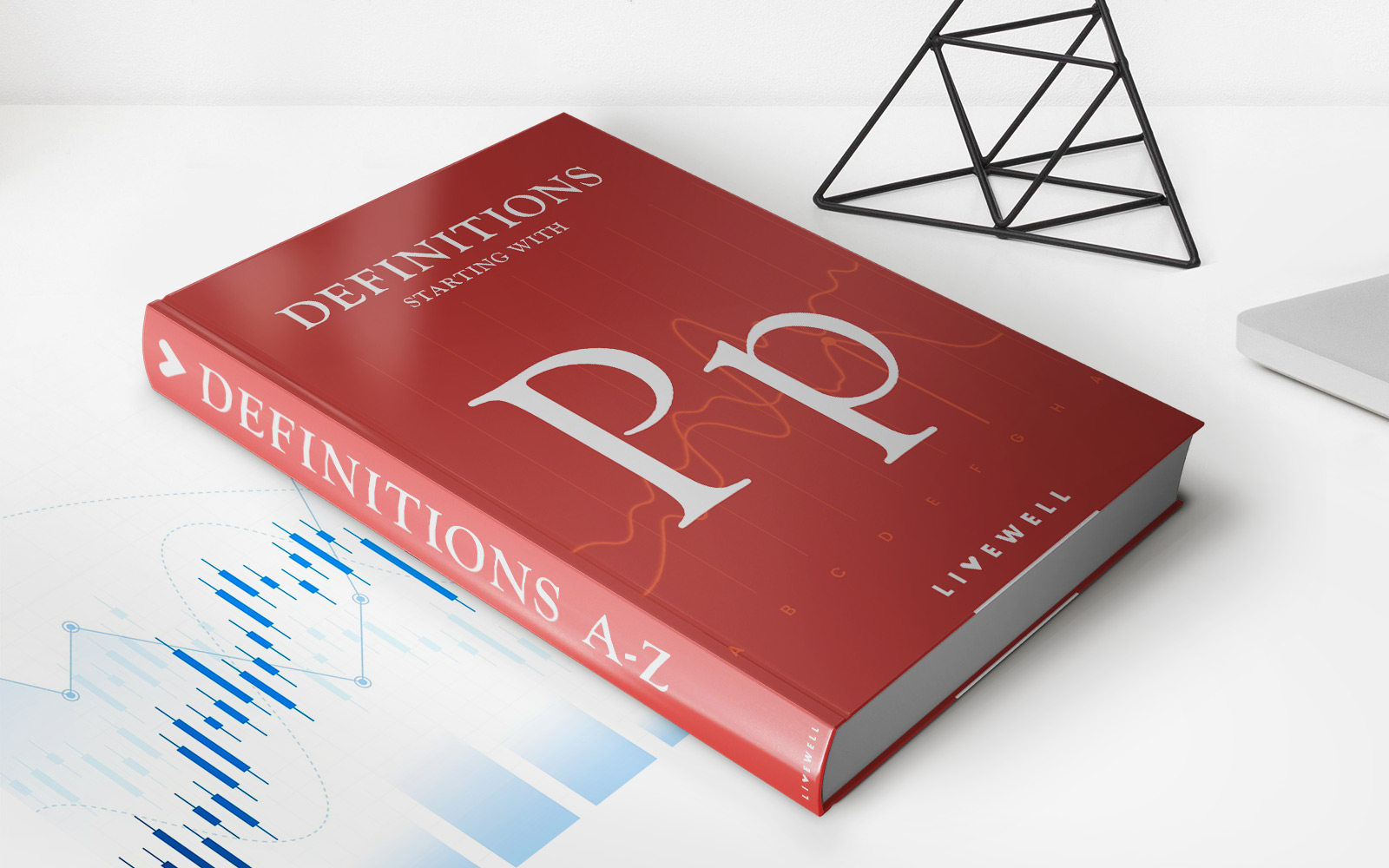Home>Finance>How Long Does A Beneficiary Have To Claim A Life Insurance Policy?


Finance
How Long Does A Beneficiary Have To Claim A Life Insurance Policy?
Published: November 16, 2023
Learn about the time frame for claiming a life insurance policy and ensure financial security for beneficiaries. Find out more about finance and life insurance claims.
(Many of the links in this article redirect to a specific reviewed product. Your purchase of these products through affiliate links helps to generate commission for LiveWell, at no extra cost. Learn more)
Table of Contents
- Introduction
- Understanding Life Insurance Policies
- What is a Beneficiary?
- Timeframe for Claiming a Life Insurance Policy
- Factors That Can Affect the Claim Timeline
- Steps to Take When Claiming a Life Insurance Policy
- Common Issues and Challenges in Claiming a Life Insurance Policy
- Resources for Locating Unclaimed Life Insurance Policies
- Conclusion
Introduction
Life insurance is a crucial financial tool that provides protection and peace of mind for individuals and their loved ones. It offers a safety net in the form of a financial payout to beneficiaries upon the death of the policyholder. However, many beneficiaries may not be aware of the timeframe within which they can claim a life insurance policy.
This article aims to provide a comprehensive understanding of the process and timeline for claiming a life insurance policy. We will explore the concept of beneficiaries, the factors that can affect the claim timeline, and the steps beneficiaries need to take to ensure a smooth and timely payout. Additionally, we will delve into common issues and challenges that can arise during the claims process, as well as resources available to locate unclaimed life insurance policies.
Whether you are a policyholder looking to provide clear instructions for your beneficiaries or a beneficiary seeking to claim a life insurance policy, this article will equip you with the knowledge necessary to navigate this important process.
Understanding Life Insurance Policies
Before delving into the specifics of claiming a life insurance policy, it is essential to have a clear understanding of what life insurance entails. Life insurance is a contract between an individual, known as the policyholder, and an insurance company. In exchange for regular premium payments, the insurance company agrees to pay out a sum of money, also known as the death benefit, to designated beneficiaries upon the death of the policyholder.
There are different types of life insurance policies, including term life insurance and permanent life insurance. Term life insurance provides coverage for a specified period, typically 10, 20, or 30 years. Permanent life insurance, on the other hand, provides coverage for the policyholder’s entire lifetime and often includes a savings component in addition to the death benefit.
When a policyholder passes away, it is the responsibility of the beneficiaries to initiate the claim process and collect the death benefit. Beneficiaries may include family members, such as spouses, children, or other individuals designated by the policyholder. It is important for policyholders to clearly identify beneficiaries and keep their policy documents updated to ensure a smooth claims process.
Life insurance policies serve as a financial safety net, providing beneficiaries with financial support during a difficult time. Whether it is to cover funeral expenses, outstanding debts, or everyday living expenses, the death benefit can offer crucial support to help beneficiaries navigate the challenges that arise after the loss of a loved one.
What is a Beneficiary?
A beneficiary is an individual or entity who is designated to receive the death benefit from a life insurance policy upon the death of the insured person. The policyholder determines and specifies the beneficiaries during the application process or can update them at any time throughout the policy’s duration.
Beneficiaries can be family members, such as spouses, children, parents, or siblings, but they can also be non-family members, organizations, or trusts. It is crucial for policyholders to carefully consider who they choose as beneficiaries and to regularly review and update this information to reflect any changes in their circumstances.
Designating beneficiaries is a significant decision that requires thoughtful consideration. The choice of beneficiaries determines who will receive the death benefit and have access to the financial protection offered by the life insurance policy. It is important to keep in mind that the death benefit is typically paid out free of income tax, making it an effective means of providing financial support to loved ones.
It is worth noting that if a policyholder does not specify a beneficiary or if the beneficiary predeceases the insured, the death benefit may be paid to the policyholder’s estate. In such cases, the funds may be subject to probate and potential delays in distribution.
Additionally, it is important for beneficiaries to be aware of their role and status. Being named as a beneficiary means that there is an expectation of receiving the death benefit. However, beneficiaries may need to initiate the claim process and provide necessary documentation to the insurance company to receive the payout.
Overall, beneficiaries play a crucial role in the life insurance policy, and it is essential for both policyholders and beneficiaries alike to understand their rights and responsibilities to ensure a smooth claims process.
Timeframe for Claiming a Life Insurance Policy
After the death of the policyholder, beneficiaries generally have a specific timeframe within which they can claim the life insurance policy and receive the death benefit. The exact timeframe can vary depending on several factors, including state laws and the terms and conditions outlined in the insurance policy.
Typically, beneficiaries should aim to start the claims process as soon as possible. Most insurance companies require that the claim be filed within a certain period, often within 30 to 60 days after the policyholder’s death. Failing to initiate the claim within the specified timeframe may result in delays or complications in receiving the death benefit.
It is important to carefully review the life insurance policy documents to understand the specific requirements and deadlines for filing a claim. The policy will outline the necessary steps, documents, and contact information to initiate the claims process.
Additionally, it is crucial for beneficiaries to gather the required documentation promptly. This may include the death certificate, policy documents, identification, and any other supporting documentation requested by the insurance company. Failing to provide the necessary documentation in a timely manner can also lead to delays in receiving the death benefit.
Furthermore, if beneficiaries are facing challenges or an unexpected delay in gathering the required documentation, it is advisable to communicate with the insurance company and keep them informed of the situation. In certain cases, insurance companies may grant extensions or provide guidance on alternative solutions.
It is important to note that the timeframe for claiming a life insurance policy may differ for specific types of policies, such as group life insurance policies offered through an employer. Additionally, state laws may establish their own timelines and regulations regarding the claims process. Therefore, it is recommended to consult the insurance policy and seek legal advice if necessary to ensure compliance with applicable regulations.
In summary, beneficiaries should aim to initiate the claims process within the specified timeframe outlined in the life insurance policy. By doing so, they can ensure a smooth and timely payout of the death benefit, providing them with the financial support they need during a challenging time.
Factors That Can Affect the Claim Timeline
While beneficiaries should initiate the claims process within the specified timeframe outlined in the life insurance policy, it is important to note that several factors can impact the overall timeline for receiving the death benefit. Understanding these factors can help beneficiaries anticipate potential delays and ensure a smoother claims process.
1. Documentation and information gathering: The time it takes to gather all the necessary documentation and information can significantly impact the claim timeline. Beneficiaries need to provide the insurance company with the required documents, such as the death certificate, policy documents, identification, and any other supporting evidence. Delays in obtaining these documents can prolong the claims process.
2. Policy review and investigation: Insurance companies typically review the policy terms and investigate the circumstances surrounding the policyholder’s death. This review process can take time, especially in cases where there may be questions regarding the cause of death or potential policy exclusions. The complexity of the policy terms and the need for further investigation can extend the claim timeline.
3. Beneficiary verification: Insurance companies may require beneficiaries to verify their identity and relationship to the policyholder. This verification process is crucial to prevent fraudulent claims and ensure that the death benefit is being paid to the rightful individuals. However, the verification process can introduce additional time delays, especially if there are issues with documentation or if beneficiaries cannot be easily reached.
4. Contestability period: Most life insurance policies have a contestability period, typically the first two years after the policy is issued. During this period, the insurance company has the right to review the policy and investigate any potential misrepresentations or fraud. If the policyholder’s death occurs within this contestability period, the claim process may be subject to more extensive scrutiny, leading to a longer timeline.
5. Dispute resolution: In some cases, beneficiaries may encounter disputes or challenges in claiming the life insurance policy. This can occur if there are disagreements among beneficiaries, disputes regarding the validity of the policy, or challenges to the designation of beneficiaries. Resolving these disputes can take time and may require legal intervention, further extending the claim timeline.
It is important for beneficiaries to be aware of these factors and to maintain open communication with the insurance company throughout the claims process. By staying informed and proactive, beneficiaries can help expedite the resolution of any potential issues and ensure a smoother and more efficient claim timeline.
Steps to Take When Claiming a Life Insurance Policy
When it comes to claiming a life insurance policy, beneficiaries should follow a series of essential steps to ensure a smooth and timely process. By being proactive and organized, beneficiaries can help expedite the claim and receive the death benefit when needed. Here are the key steps to take when claiming a life insurance policy:
1. Gather necessary documents: Start by collecting all the necessary documents, including the policyholder’s death certificate, policy documents, identification (such as driver’s license or passport), and any other supporting documentation required by the insurance company. Check the policy documents or contact the insurance company to confirm the specific documentation needed.
2. Notify the insurance company: Contact the insurance company as soon as possible to inform them of the policyholder’s death. The insurance company will guide you through the claims process and provide instructions on next steps. Be prepared to provide the policy details, policyholder’s information, and the cause of death, if known.
3. Complete the claim forms: Fill out the necessary claim forms provided by the insurance company. These forms will include information about the policyholder, beneficiaries, and the policy itself. Ensure that all information is accurate and provide any requested documentation along with the forms.
4. Submit the claim: Once all the required documents and forms are completed, submit the claim to the insurance company. Keep copies of all documents for your records and send them through a reliable and trackable method to ensure they are received by the insurance company.
5. Follow up and provide additional information: During the claims process, the insurance company may request additional information or documentation to validate the claim. Stay in regular contact with the company, promptly respond to their requests, and provide any requested information to expedite the claim.
6. Stay organized and maintain records: Keep a record of all correspondence, including dates, names of the representatives you speak to, and any instructions or information provided. This will help you stay organized and easily refer back to any important details throughout the claims process.
7. Be patient and follow up: The claims process may take some time, so it is important to be patient. If you haven’t received a response or an update within a reasonable timeframe, do not hesitate to follow up with the insurance company to inquire about the status of your claim.
8. Review and verify the payout: Once the claim is approved, carefully review the details of the payout. Ensure that the death benefit amount and any additional payouts, such as accrued interest or policy loans, match the terms outlined in the policy. If there are any discrepancies, contact the insurance company for clarification.
By following these steps, beneficiaries can navigate the claims process effectively and increase the likelihood of a timely and hassle-free payout of the life insurance policy’s death benefit.
Common Issues and Challenges in Claiming a Life Insurance Policy
While claiming a life insurance policy is generally a straightforward process, there are certain issues and challenges that beneficiaries may encounter along the way. Being aware of these common hurdles can help beneficiaries navigate potential roadblocks and ensure a smoother claims process. Here are some of the common issues and challenges that can arise:
1. Lack of information: Beneficiaries may face difficulties in locating the life insurance policy and gathering the necessary information. This can occur if the policyholder failed to communicate the details of the policy or did not keep their beneficiaries informed. It is important for beneficiaries to attempt to locate the policy documents, review the policyholder’s financial records or contact the policyholder’s insurance agent or employer to obtain the information needed to initiate the claim.
2. Disputed beneficiary designation: In some cases, disputes may arise over the designation of beneficiaries. Conflicting claims can arise if there is an outdated beneficiary designation or if there are multiple potential beneficiaries with competing claims. Resolving these disputes can delay the claims process. If there is a dispute, it may be necessary to seek legal assistance to resolve the issue.
3. Contestability period investigations: Insurance companies have the right to investigate claims made within the contestability period, typically the first two years of the policy. If the cause of death raises questions or if there are potential misrepresentations in the application, the insurance company may launch an investigation, which can prolong the claims process.
4. Outstanding loans or policy loans: If the policyholder had outstanding loans or had taken loans against the cash value of a permanent life insurance policy, these amounts may be deducted from the death benefit before it is paid out to the beneficiaries. This can result in a reduced payout or additional complexities in resolving the claim.
5. Probate and estate issues: If the life insurance policy is not properly structured or if the beneficiary predeceases the insured or is unable to claim the policy, the death benefit may become part of the policyholder’s estate. This can result in delays and complications, particularly if the estate is subject to probate or if there are other estate-related issues.
6. Incomplete or missing documentation: The claims process requires the submission of various documents, such as the death certificate, policy documents, and identification. If any of these documents are missing or incomplete, it can lead to delays in processing the claim. Beneficiaries should ensure they have all the necessary paperwork and provide accurate and legible information to the insurance company.
7. Lack of communication with the insurance company: Poor communication or lack of follow-up with the insurance company can lead to unnecessary delays. It is essential to stay in regular contact with the insurance company, promptly respond to any requests for information, and keep a record of all interactions for reference.
If beneficiaries encounter any of these issues or challenges, it is recommended to seek guidance from a legal professional or consult with the insurance company’s claims department to address and resolve the matter efficiently.
Resources for Locating Unclaimed Life Insurance Policies
Locating unclaimed life insurance policies can be a challenging task, especially if the policyholder did not communicate the policy details to their beneficiaries. However, there are resources available that can assist in the search and retrieval of unclaimed life insurance policies. Here are some of the key resources to consider:
1. State Insurance Departments: Each state has its own Department of Insurance, which can provide valuable information and assistance in locating unclaimed life insurance policies. Many state insurance departments have online databases or search tools that allow individuals to search for unclaimed policies within their jurisdiction. These databases often include information about policies that were reported as unclaimed by insurance companies.
2. National Association of Insurance Commissioners (NAIC): The NAIC has developed a Life Insurance Policy Locator Service, which is a national database designed to help individuals identify and locate potential unclaimed life insurance policies. The service allows beneficiaries to submit a request and search for policies that may be in their name or the name of a deceased loved one. The NAIC works in collaboration with participating insurance companies to facilitate the search process.
3. MissingMoney.com: This website, endorsed by the National Association of Unclaimed Property Administrators (NAUPA), allows individuals to search for unclaimed property, including unclaimed life insurance policies, by state. Beneficiaries can enter their information and conduct a search to identify any potential unclaimed policies that may be in their name or the name of a deceased family member.
4. Hire a Professional Locator or Estate Attorney: In some cases, beneficiaries may choose to hire a professional locator or an estate attorney who specializes in handling unclaimed life insurance policies. These professionals have the expertise and resources to conduct thorough searches and assist in identifying any potential policies that may have been overlooked.
5. Check the Policyholder’s Financial Records: Reviewing the policyholder’s financial records, including bank statements, tax returns, or safe deposit box contents, may reveal evidence of a life insurance policy. Look for premium payment records, correspondence from insurance companies, or any other documentation related to life insurance.
6. Contact the Policyholder’s Employer or Union: If the policyholder had life insurance coverage through their employer or union, contacting the human resources department or the benefits administrator can provide valuable insight into the existence of a life insurance policy. They may be able to provide contact information for the insurance company or offer guidance on how to proceed with the claims process.
It is important to exercise patience and persistence when searching for unclaimed life insurance policies. Policies may have been issued years ago or held with different insurance companies, making the search process more challenging. By utilizing these resources and exploring various avenues, beneficiaries can increase their chances of locating and claiming any unclaimed life insurance policies that may rightfully belong to them.
Conclusion
Claiming a life insurance policy is an important process that provides beneficiaries with the financial support they need during a challenging time. By understanding the timeframe, steps, and common challenges involved in the claims process, beneficiaries can navigate the process smoothly and ensure a timely payout of the death benefit.
From designating beneficiaries to gathering the necessary documentation and initiating the claims process, it is crucial for beneficiaries to be proactive and well-informed. Clear communication with the insurance company, prompt response to requests for information, and thorough record-keeping can help expedite the resolution of any potential issues that may arise.
However, it is equally important for policyholders to keep their beneficiaries informed and regularly update their policy documents to reflect any changes in circumstances. This ensures that beneficiaries are well-prepared and equipped to navigate the claims process when the time comes.
Additionally, utilizing resources such as state insurance departments, national databases, and professional locators can assist in locating any unclaimed life insurance policies that may have been overlooked. These resources provide a valuable means of identifying and claiming policies that may rightfully belong to beneficiaries.
It is crucial for both policyholders and beneficiaries to recognize the importance of life insurance and to take the necessary steps to ensure a smooth and efficient claims process. By understanding the intricacies of life insurance policies, being proactive in the claims process, and utilizing available resources, beneficiaries can effectively navigate the complexities of claiming a life insurance policy and secure the financial protection offered by these vital financial instruments.
Ultimately, the timely receipt of the death benefit provides beneficiaries with the necessary support to address financial obligations, provide for their families, and honor the legacy and intentions of the policyholder.














